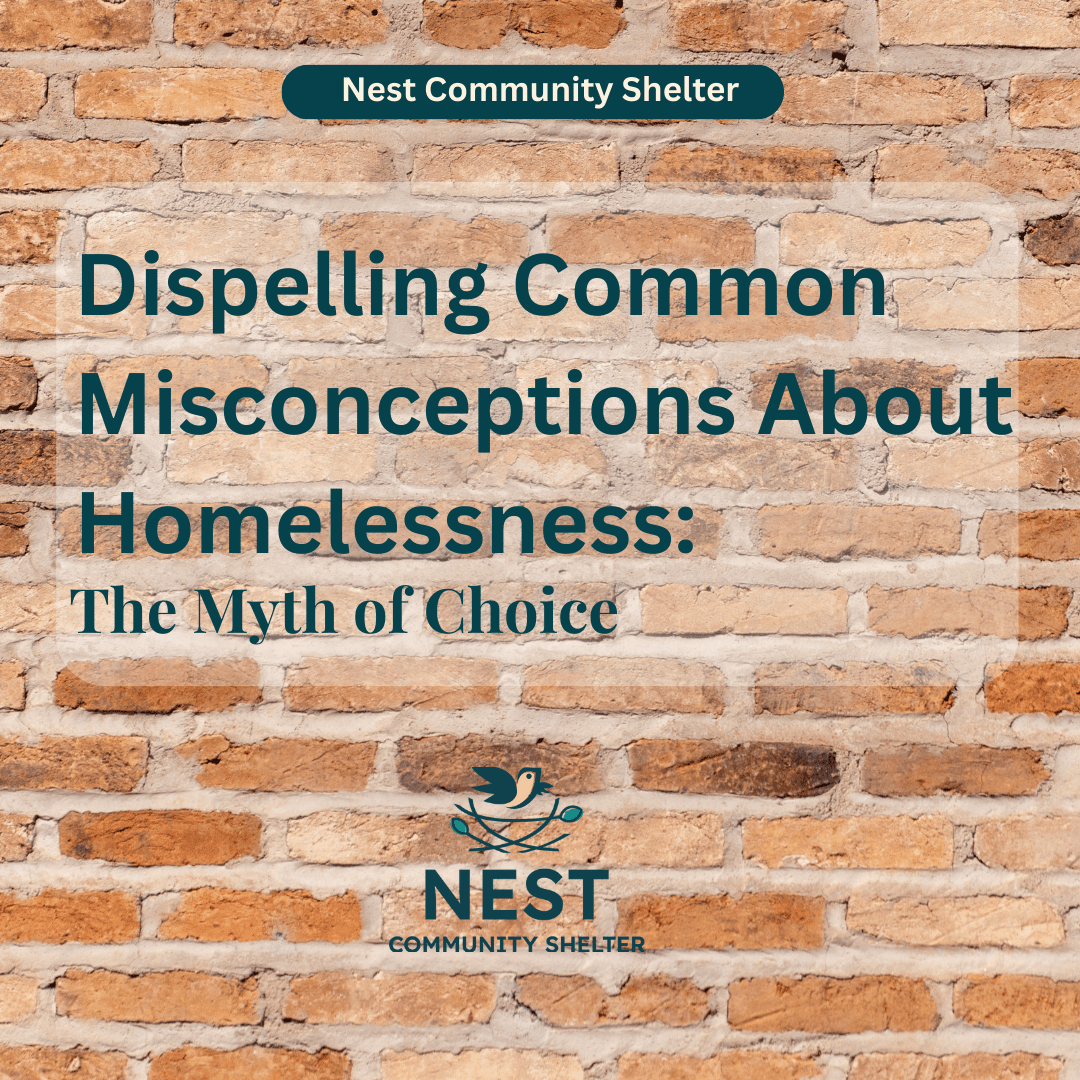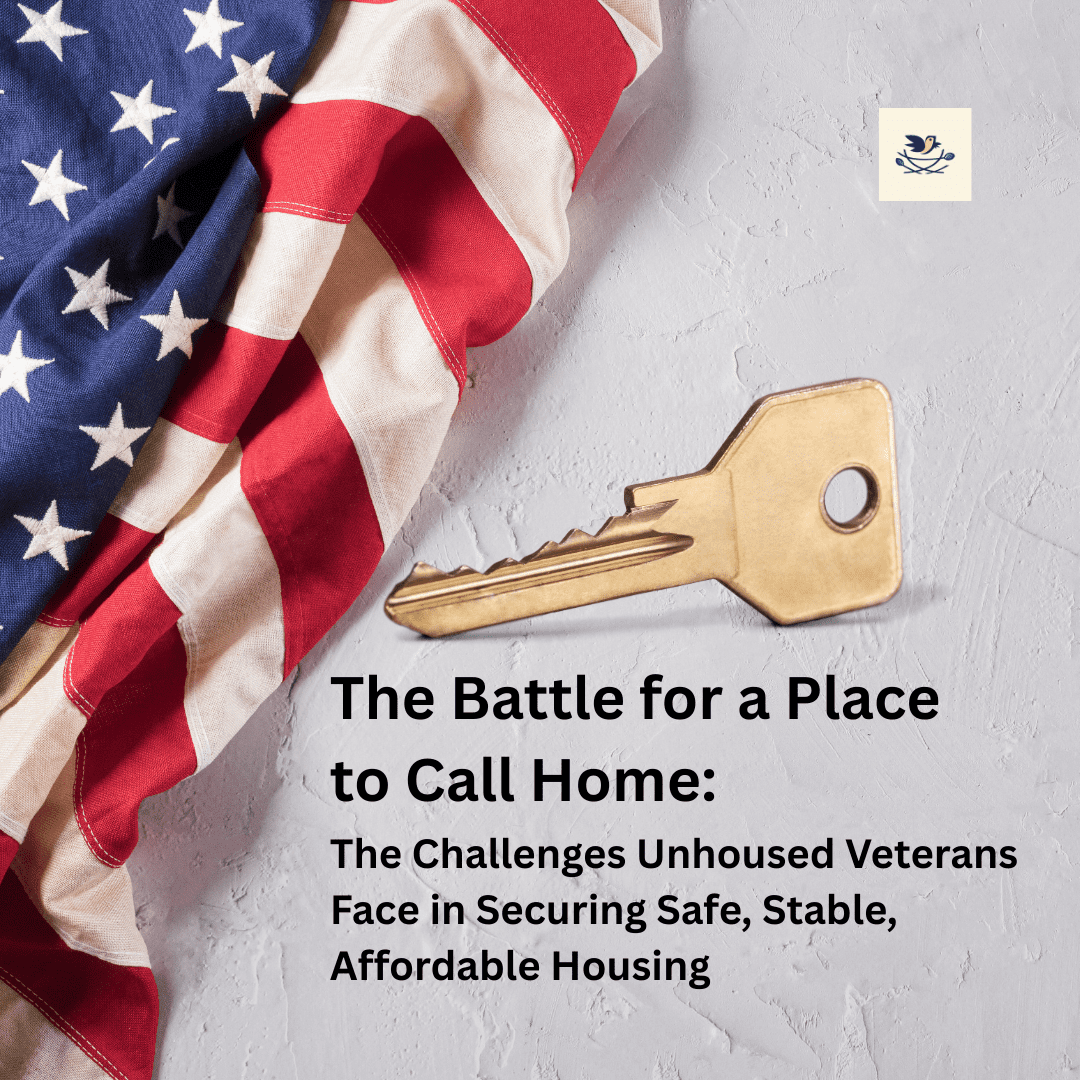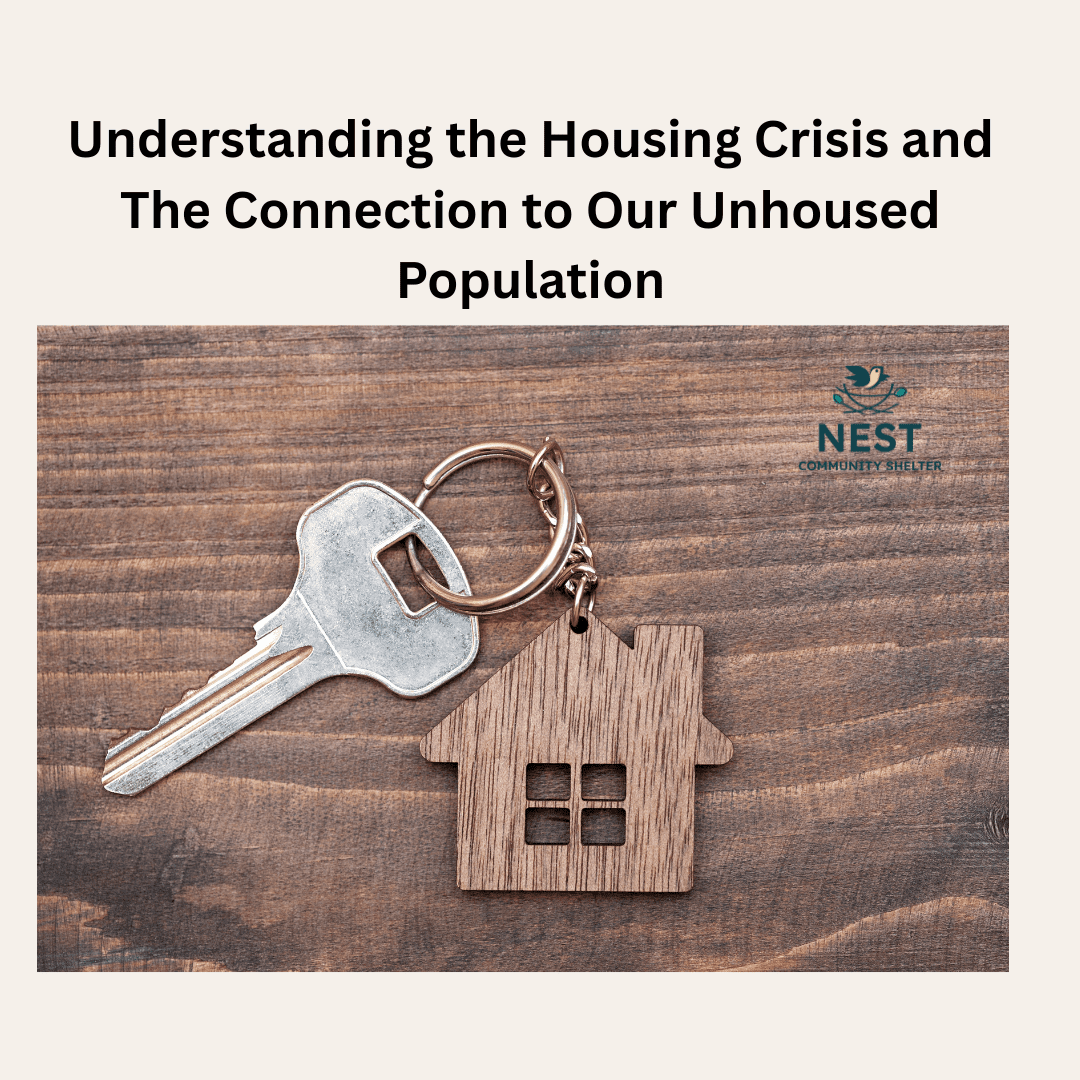
Homelessness is complex, and there are many roads that lead to this living situation. Yet, if you ask just about anyone who has walked through the doors of our shelters in Michigan City or La Porte if it was a choice or a goal to experience homelessness, you’ll hear a consistent answer, “no.” The truth is that very few individuals set out to experience homelessness. The more time that one spends with our unhoused neighbors, the more it becomes clear that they’ve found themselves in this situation in only a few steps, such as loss of a job, loss of lodging, a car that broke down, causing job loss, and then housing loss. The reality is that most individuals are much closer to experiencing homelessness than they realize.
In this next series on the Nest Community Shelter blog, we are going to take a deep dive into common misconceptions about homelessness. Today, we are going to tackle the idea of choice and look at a few of the reasons why, in most cases, choice is not active but rather a victim of circumstance.
A Complex Network of Compounding Issues
One of the primary causes of homelessness isn’t personal failure or poor choices—it’s a nationwide housing affordability crisis. At the root of modern-day homelessness are failed policies, severely underfunded programs that have led to affordable housing shortages, wages that don’t keep up with rising rents and housing costs, inadequate safety nets, inequitable access to quality healthcare, and mass incarceration. In our own state, just this week, a bill, SB 197, would punish individuals experiencing homelessness with up to 60 days in jail or a $500 fine for those arrested and charged.
According to the U.S. Government Accountability Office, when median rents increase by $100, homelessness rates rise by roughly nine percent. In Michigan City, we see this happening in the lives of our guests. For example, according to rent.com, a studio apartment in town saw a +12% rise from last year, a 1-bedroom apartment saw an +8% rise, and a 2-bedroom apartment saw a +11% rise. With limited rental stock available within Michigan City, the scarcity is causing rent prices to rise sharply year over year. This means that the growing gap between housing costs and wages is pushing more people to the brink.
Housing Costs vs. Wages in Indiana
Across the state, the situation is dire. To afford a two-bedroom rental at fair market rate ($1,148) at the state level, a full-time Indiana worker would need to earn a “Housing Wage” of $22.07 per hour—far above both the state’s minimum wage of $7.25 and the average renter’s wage of $17.92. In Michigan City, the cost is slightly higher at $1,151 for the same apartment.
Indiana’s housing affordability has worsened, dropping from 43rd to 34th most affordable state between 2021 and 2024. This figure from Prosperity Indiana and The National Low Income Housing Coalition demonstrates the growing wage gap. The truth is many of our guests are currently or have worked consistently, yet still struggle to find affordable housing.
Lives Behind the Statistics
Behind these statistics are real people. We’d like to highlight what this looks like in real life. To protect the anonymity of our guests, we’ve compiled a scenario that we would expect to encounter at our shelter. We are going to call our example guest Sarah.
Sarah worked as a healthcare aide, earning $14.79 per hour—almost $8 less than the housing wage needed for basic shelter. When her car needed emergency repairs, she faced an impossible choice: fix her transportation to work or pay rent. Without savings to cover both, she lost her apartment despite working full-time.
This experience, while fictionalized, is exceptionally common at Nest. Even people earning above minimum wage struggle with housing costs. According to the United States Interagency Council on Homelessness, 40%-60% of people experiencing homelessness have a job, but housing is unaffordable because wages have not kept up with rising rents. There is currently no state where a full-time minimum-wage worker can afford a modest apartment.
Structural Factors, Not Personal Choices
Today, many individuals who are experiencing homelessness find themselves in this situation because they simply don’t make enough money to pay for housing. This inability is caused by stagnant wages, benefits, and other issues impacting one’s ability to work, such as medical conditions, limited education, gaps in work history, or justice system involvement—barriers further exacerbated by a lack of affordable housing. We highlighted the challenges individuals experiencing homelessness face in securing and maintaining steady work on our blog last month.
The myth that people choose to live outside in tents or cars ignores the reality that tens of thousands die yearly due to the dangerous conditions of living without housing. According to the United States Interagency Council on Homelessness, the average individual experiencing homelessness dies nearly 30 years earlier than their housed counterpart—often from easily treatable illnesses.
Building Understanding For a Healthier Community for All:
The January 2023 Point-In-Time count identified roughly 653,000 people experiencing homelessness nationwide—the highest number ever recorded. Here in Indiana, homelessness has been on the rise as housing costs grow further out of reach for those with the lowest incomes while our housing safety net remains inadequate. These numbers reflect a system failing more people each year.
Ending homelessness requires addressing its structural causes: creating truly affordable housing, strengthening social safety nets, raising wages, and ensuring healthcare doesn’t lead to bankruptcy. This also means sympathetic policies that lift our most vulnerable out of poverty, homelessness, and housing insecurity, not criminalizing means beyond their control.
The next time you hear someone suggest homelessness is a choice, remember the faces we see each night are individuals working to put a roof over their heads, individuals who choose a stable and healthy living environment. Almost no one chooses to spend a night at a shelter.
Our neighbors experiencing homelessness don’t need judgment about imagined choices but meaningful opportunities to rebuild stability in a system that has failed them.



